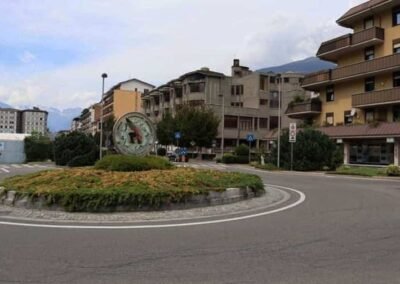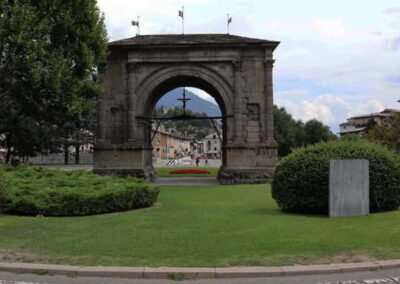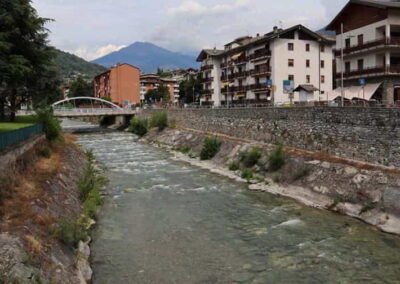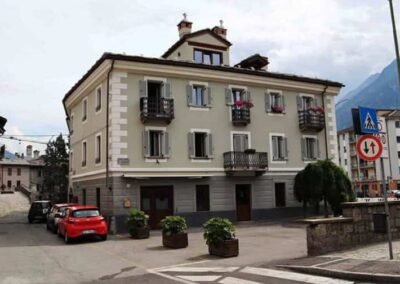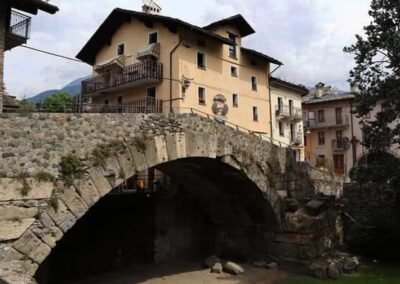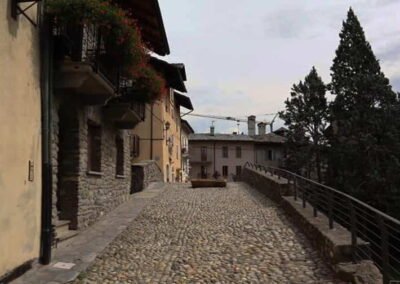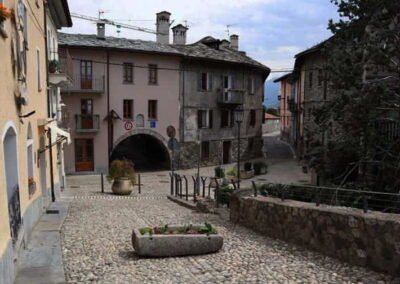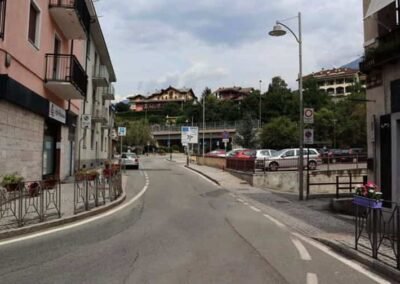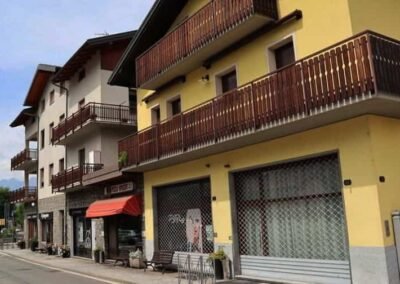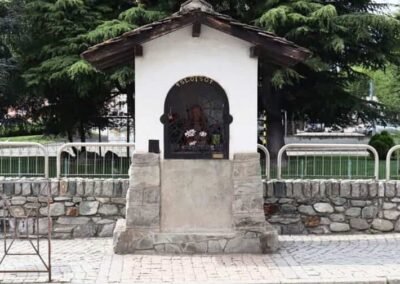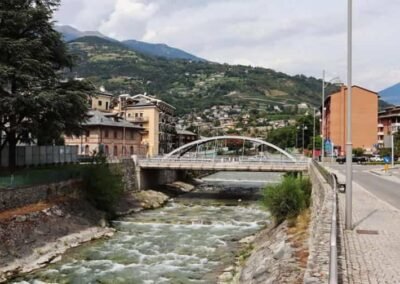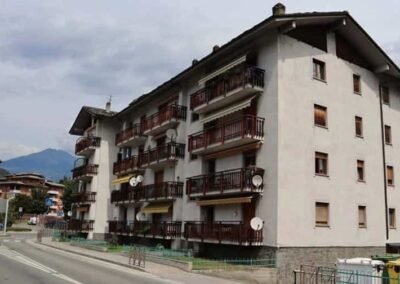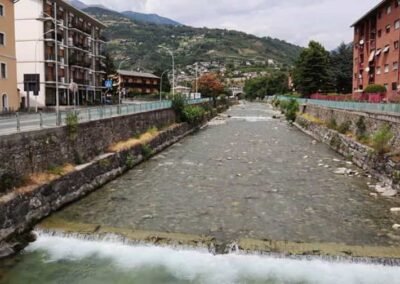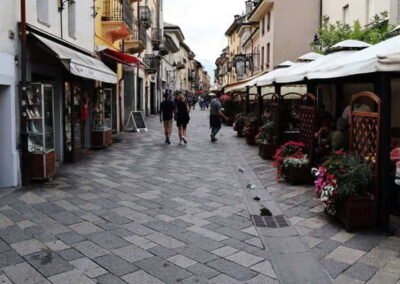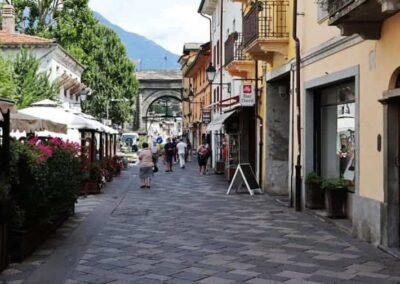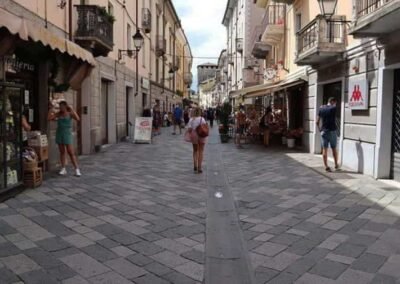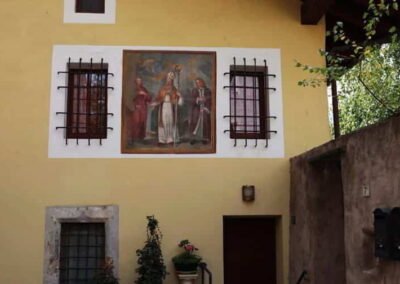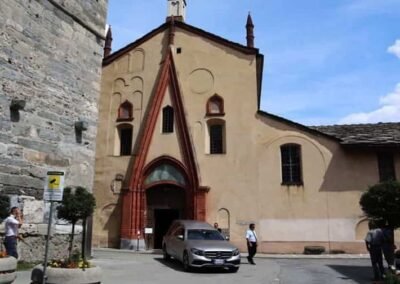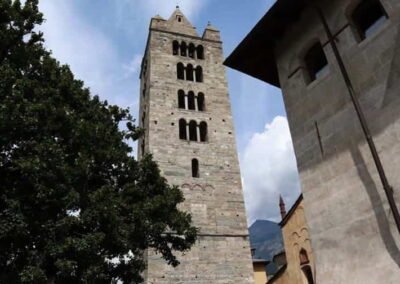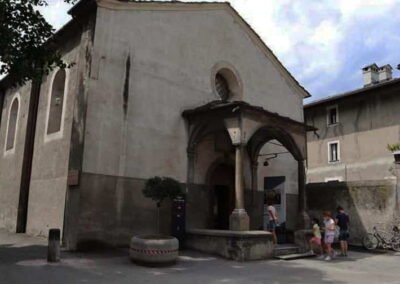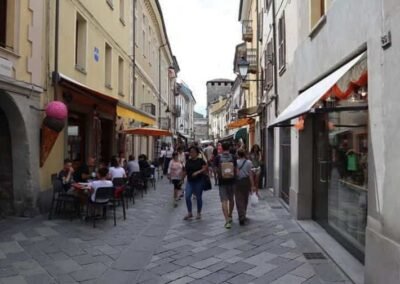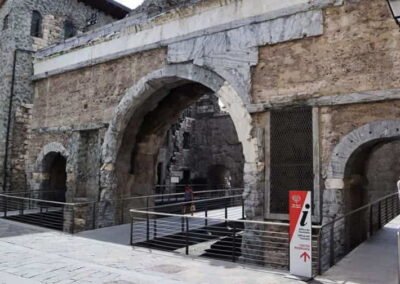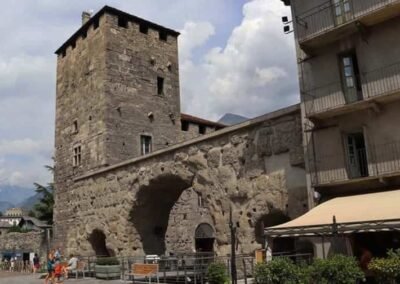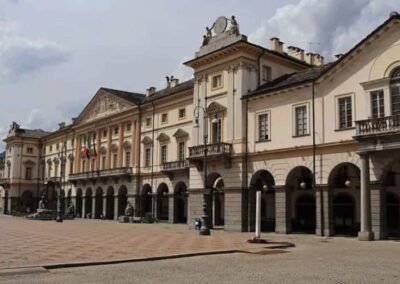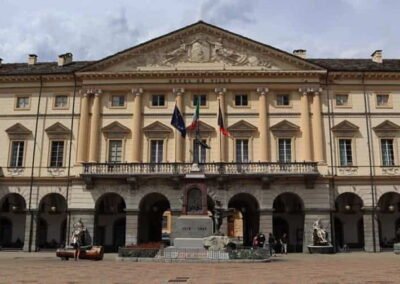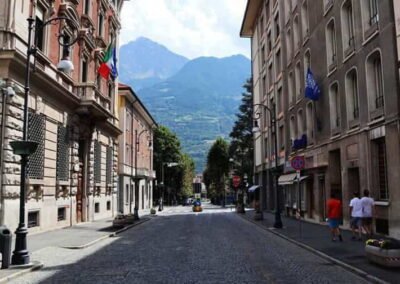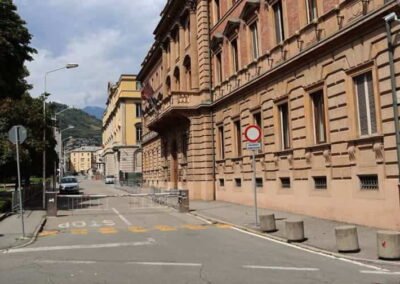HOME
THE REGIONS OF ITALY
PLACES IN ITALY
Italy in Photos
Via Ponte Romano, 11100 Aosta AO, Italy (August 2020)
Aosta
Aosta is a fascinating city located in the heart of the Aosta Valley, a mountainous region in north-western Italy. Surrounded by some of the highest peaks in the Alps, including Mont Blanc, Monte Rosa, and the Matterhorn, Aosta is often called the “Rome of the Alps” because of its remarkable collection of Roman ruins and monuments. Despite its relatively small size, the city has an extraordinary cultural and historical significance, blending Italian and French influences in both language and lifestyle. Its strategic position near the borders with France and Switzerland has shaped its character as a place where diverse traditions meet in harmony.
Founded by the Romans in 25 BC under the name *Augusta Praetoria Salassorum*, Aosta was established after the conquest of the Salassi, an ancient Alpine tribe. The city soon became an important Roman military and administrative centre, and much of that heritage remains visible today. Among its best-preserved ancient sites are the Arch of Augustus, built to honour Emperor Augustus; the Roman Theatre, with its impressive façade that still stands tall; and the Porta Praetoria, the monumental gate that once marked the entrance to the city. Walking through Aosta’s historic centre is like stepping back in time, where every stone seems to whisper a fragment of the city’s long history.
The medieval period also left a strong mark on Aosta, with the construction of churches, towers, and fortifications that reflect its continuing importance through the centuries. The Cathedral of Santa Maria Assunta, located on the main square, is a masterpiece combining Romanesque and Gothic styles, housing beautiful frescoes and artistic treasures. Nearby, the Collegiate Church of Saint Orso is another jewel, famous for its Romanesque cloister decorated with finely carved capitals that illustrate biblical scenes and local legends.
Modern Aosta is a lively and welcoming city that skilfully balances its ancient legacy with contemporary life. Its streets are lined with shops, cafés, and restaurants offering local specialties such as fontina cheese, cured meats, and mountain wines. Festivals and cultural events are frequent, celebrating the region’s history, folklore, and gastronomy. In winter, Aosta serves as a gateway to some of Europe’s finest ski resorts, while in summer it attracts hikers, climbers, and nature lovers. With its unique mix of history, culture, and Alpine beauty, Aosta stands as a shining example of how a small mountain city can embody the timeless spirit of Italy.
Worth a Visit
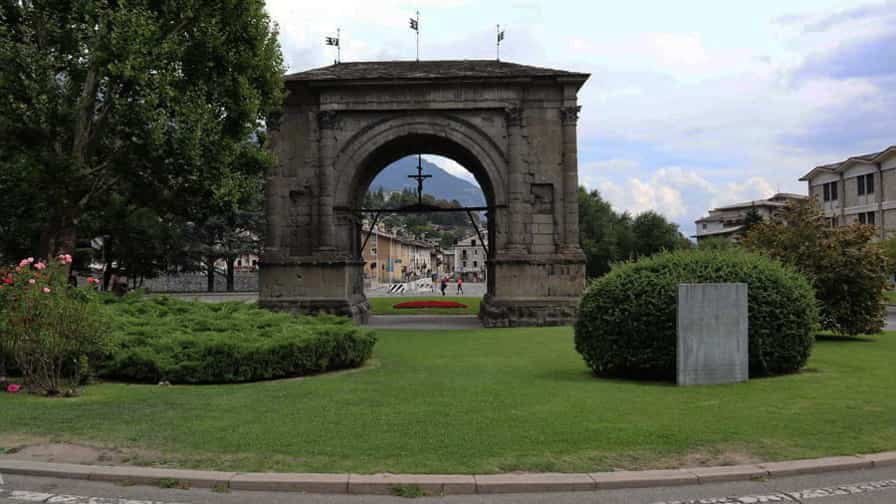
The Arco di Augusto, or Arch of Augustus, stands as one of the most iconic monuments in the city of Aosta, located in the Aosta Valley region of north-western Italy. Erected in 25 BCE, this impressive Roman structure was built to commemorate the victory of the Roman emperor Augustus over the Salassi, a local Alpine tribe that had long resisted Roman rule. With its deep historical significance and remarkable state of preservation, the arch remains a powerful symbol of Roman power and architectural prowess in the Alpine region. Constructed from local conglomerate stone, the Arco di Augusto rises to a height of approximately 11 meters.
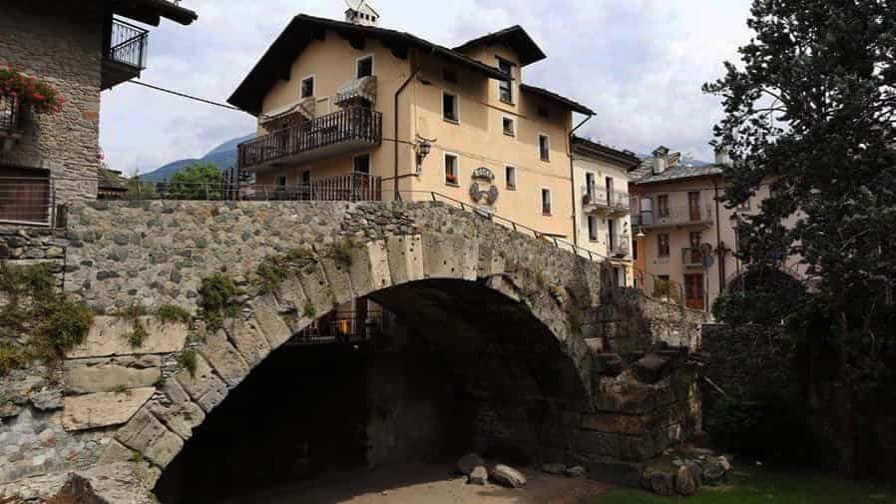
The Ponte Romano, or Roman Bridge, in Aosta is a striking example of ancient Roman engineering that has withstood the test of time for over two millennia. Located in the heart of the Aosta Valley in north-western Italy, this historic structure was built around 25 BCE, during the reign of Emperor Augustus, as part of the broader Roman effort to develop infrastructure in the newly conquered Alpine territories. Although no longer used for vehicular traffic today, the Ponte Romano remains a significant cultural and architectural landmark, attracting tourists, historians, and engineers alike. Originally constructed to span the Buthier River, the Roman Bridge formed a vital part of the Via consularis delle Gallie, a major Roman road connecting Italy with present day France.
Photo Gallery of Walk – Via Torino to Viale Giorgio Carrel
Approximately 1.51 km – 0.94 miles
The walk starts in Via Torino – Viale Giuseppe Garibaldi – Via Sant’Anselmo – Ponte di Pietra di Aosta – Piazza Vuillermin Renato – Ponte Romano Aosta – Via Ponte Romano – Via Mont Gelè – Via Mont Velan – Via Pasquettaz – Via Vetreria Antica – Piazza Arco D’Augusto – Via Sant’Anselmo – Via Sant’Orso – Via Sant’Anselmo – Piazza Porta Pretoria – Via Porta Pretoria – Piazza Emile Chanoux –Viale Conseil Des Commis – Giardini pubblici, Viale Conseil Des Commis – Via Tour Du Pailleron – Viale Conseil Des Commis –Viale Giorgio Carrel
COPYRIGHT © 2018-2025 ITALY IN PHOTOS - ALL RIGHTS RESERVED
